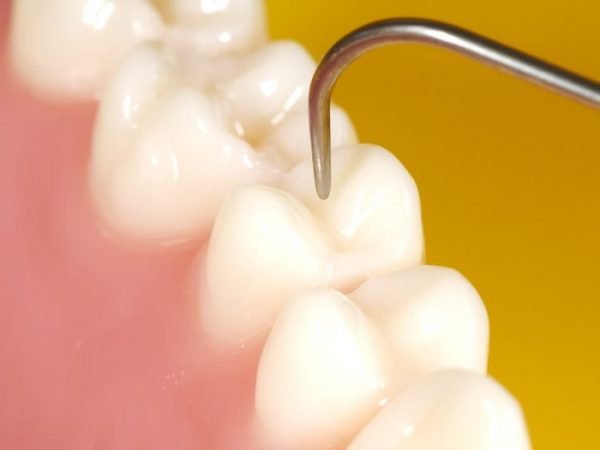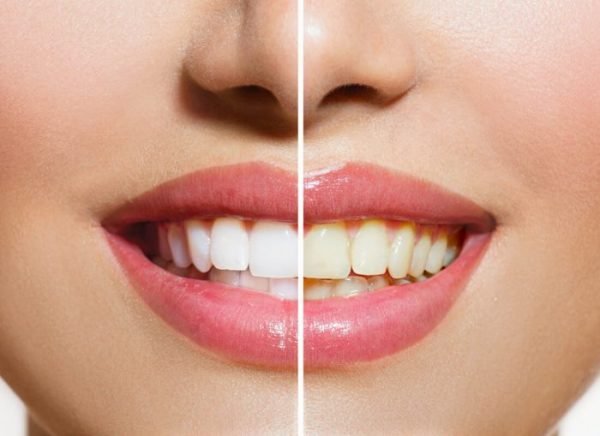ABOUT ALL-ON-4
The All-on-4 dental implant treatment was designed by Nobel Biocare, and is used to replace an entire upper or lower set of teeth. The procedure creates a permanent prosthesis by using four dental implants that act as an anchor for a bridge or overdenture of 12-to-14 teeth.
The dentist performs or examines diagnostic tests (such as panoramic X-rays and a CT scan) to assess the patient’s jaw bone density. These scans are then often followed up by computer-aided design and computer-aided manufacturing (known as CAD/CAM) processes that plan the All-on-4 procedure and allow the dentist to precisely insert the dental implants into the jaw.
The All-on-4 treatment is recommended for patients with a full arch of missing teeth, or who are planning to have any remaining teeth removed and replaced with implants. It is ideal for patients who have lost teeth through trauma or for whom All-on-4 offers a stable, long-term alternative to traditional dentures (which need to be removed every few years). In terms of time, replacing many teeth with single dental implants can take months. The All-on-4 procedure, on the other hand, can be performed in a few days, usually spread over two visits to the dentist.
Some clinics offer instant-load implants for the lower jaw (the upper jaw bone is not dense enough in the upper jaw), enabling patients to have new teeth straight away. However, instant-load implants have lower success rates, usually because the implants are not given sufficient time to heal and, as a result, do not fuse correctly to the bone.
Recommended for
- Persons who require a full arch of false teeth
- Persons who want to preserve the bone in their jaw
- Persons who seek an alternative and long-term solution to dentures
TIME REQUIREMENTS
- Average length of stay abroad: 1 weeks.
- Number of trips abroad needed: 2.
During the first visit, patients are fitted with a temporary set of false teeth. They then return approximately six months later to replace these with a permanent option.

COMPARE ALL-ON-4 PRICES AROUND THE WORLD
| Country | Cost |
|---|---|
| Thailand | 8301€ |
| Costa Rica | 7607€ |
| Spain | 5500€ |
| Mexico | 5101€ |
| Poland | 4213€ |
| Hungary | 4000€ |
HOW TO FIND QUALITY TREATMENT ABROAD
BEFORE ALL-ON-4 ABROAD
Before receiving All-on-4, the patient needs to have enough bone to support the implants. If there is not enough bone, a bone graft will be needed.
When traveling abroad to receive an All-on-4 procedure, patients should send the dentist any recent diagnostic tests they have completed, including CT scans and dental X-rays, as well as any other dental or medical records that may be relevant. This helps the dental clinic to provide an accurate treatment cost estimate.
HOW IS IT PERFORMED
The first stage of All-on-4 involves the four dental implants being placed into the upper or lower jawbone. Two implants are placed vertically where a person’s incisors are, and two implants are placed, at a 45-degree angle, where the posterior teeth usually lie. The 45-degree angle allows the implants to make optimal use of available bone. A provisional prosthesis is then attached straight away.
The second (final) stage of the procedure is performed approximately six months later, once the implants have healed and integrated with your jaw. A permanent solution such as a dental bridge or removable overdenture is attached.
Anesthesia
Local anesthesia is most commonly used, sometimes in conjunction with sedative medication.

WHAT TO EXPECT AFTER ALL-ON-4
Post procedure care
In the first three-to-six months following the first procedure, the mouth will be healing and the bone and gums change shape to adapt to the new fixture. During this time, patients should exercise extreme caution if eating hard or very chewy foods. Patients generally should place as little pressure as possible on the implants, so the bone can heal well. The dentist can provide advice on exactly what should or should not be eaten during this time.
It is essential that patients follow the dentist’s advice and guidance as failure to do so can result in the jaw bone not healing correctly, which can lead to a number of risks (listed below).
Possible discomfort
Patients should expect considerable discomfort and swelling after the procedure. For most, the worst of the pain subsides after a week.
After the first procedure, the temporary prosthesis may feel a little uncomfortable or like it does not quite fit correctly. This is quite common but is natural while the gums and the jawbone heals. The permanent solution (dental bridge or overdenture), received at the second appointment, will feel stronger and more natural.
IMPORTANT THINGS TO KNOW ABOUT ALL-ON-4
Success rates
All-on-4 dental implants have a success rate of approximately 95%.
Not recommended for
- Pregnant women
- Persons with a suppressed immune system
- Persons with diabetes
- Heavy smokers
- Persons who have suffered a recent heart attack
- Persons with bruxism (teeth grinding) issues
- Persons with significant jaw bone loss
Potential risks
- Surgical infection
- Failure to osseointegrate (fuse to the bone)
- Nerve damage
- Damage to surrounding teeth
- Sinus damage
- Loss of jaw bone
FREQUENTLY ASKED QUESTIONS
The All-on-4 procedure is a full mouth restoration that replaces an entire set of teeth with a permanent prosthesis that is anchored to 4 dental implants in the jaw.
The All-on-4 prosthesis is similar to dentures in that it is a full set of teeth that rests against the gum line, but it is not removable the way dentures are and they can be treated like natural teeth. They are brushed normally and should not loosen when eating.
All-on-4 implants tend to look more natural than other dental implants because it is a full set of prosthetic teeth, so there is no “fake” tooth next to a “real” one to compare it to. Some patients report a problem with a gap between the prosthetic and the gum line but this can be corrected.
The artificial teeth or “prostheses” used in All-on-4 are made out of porcelain or acrylic, similar to dentures.
The restoration performed during the All-on-4 procedure is permanent as any remaining teeth in the treatment area will be removed before the implants are placed.
Yes. It is possible, and clinics like Costa Rica Bluezone offer this. The advantage is that the treatment can be finished in one trip abroad, and the patient will have esthetic results straight away. The disadvantage is that in order to avoid putting pressure on the implants, the patient is advised to follow a liquid diet for one month.















